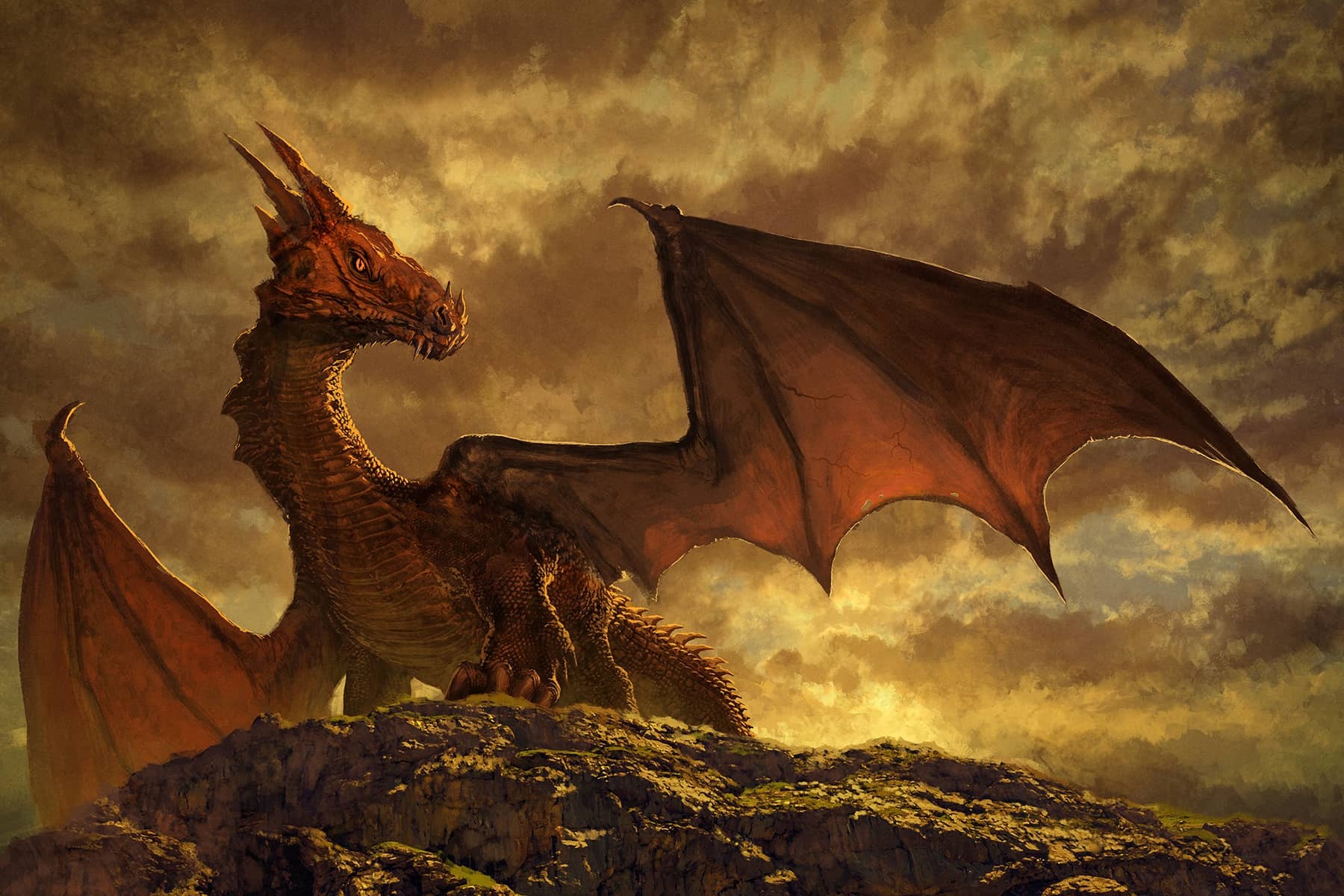
Dragons have fascinated humans for centuries, appearing in myths, legends, and folklore across the globe. But what makes these mythical creatures so captivating? From the fire-breathing beasts of European tales to the wise, benevolent dragons of Asian lore, these legendary beings have left an indelible mark on cultures worldwide. Did you know that dragons symbolize power, strength, and good fortune in many traditions? Or that some stories describe them as guardians of treasure? Whether you're a fan of fantasy novels, movies, or ancient myths, there's always something new to learn about these awe-inspiring creatures. Let's dive into 35 intriguing facts about dragon legends that will spark your imagination and deepen your appreciation for these mythical marvels.
Key Takeaways:
- Dragons have been part of human culture for centuries, with each culture having its unique stories and characteristics. They symbolize power, wisdom, chaos, and protection, leaving a significant mark on literature, art, and religion.
- Dragons continue to captivate modern audiences through fantasy literature, video games, movies, and TV shows. They represent complex personalities and environmental themes, reflecting contemporary values and ideas.
Origins of Dragon Legends
Dragons have fascinated humans for centuries. These mythical creatures appear in various cultures, each with unique stories and characteristics. Here are some intriguing facts about the origins of dragon legends.
-
Ancient Mesopotamia: The earliest dragon myths come from Mesopotamia, where the dragon Tiamat represented chaos and was defeated by the god Marduk.
-
Chinese Dragons: In China, dragons symbolize power, strength, and good luck. They are often depicted as benevolent and wise.
-
European Dragons: European dragons are typically portrayed as malevolent, fire-breathing creatures. They often guard treasures and are slain by heroes.
-
Norse Mythology: In Norse legends, dragons like Fafnir are associated with greed and destruction. Fafnir was once a dwarf who turned into a dragon to guard his hoard of gold.
-
Indian Mythology: The Indian dragon, Vritra, is a serpent-like creature defeated by the god Indra, symbolizing the triumph of good over evil.
Physical Characteristics of Dragons
Dragons come in various shapes and sizes, depending on the culture and myth. Here are some fascinating details about their physical traits.
-
Winged or Wingless: Some dragons, like the European ones, have wings, while others, like Chinese dragons, are wingless and snake-like.
-
Fire-Breathing: Many Western dragons are known for their ability to breathe fire, a trait that symbolizes destruction and power.
-
Multiple Heads: Some dragons, like the Greek Hydra, have multiple heads. Cutting off one head often results in two more growing back.
-
Scales and Armor: Dragons are often depicted with tough, impenetrable scales or armor, making them formidable opponents.
-
Size Variations: Dragons can range from small, snake-like creatures to massive, mountain-sized beasts.
Dragons in Literature and Pop Culture
Dragons have left a significant mark on literature and pop culture. Their presence in stories and media continues to captivate audiences.
-
Beowulf: One of the earliest literary dragons appears in the epic poem "Beowulf," where the hero battles a dragon in the final act.
-
The Hobbit: J.R.R. Tolkien's "The Hobbit" features Smaug, a cunning and greedy dragon who hoards a vast treasure.
-
Harry Potter: In the "Harry Potter" series, dragons are magical creatures used in various tasks, including the Triwizard Tournament.
-
Game of Thrones: The TV series "Game of Thrones" features dragons as powerful weapons of war, controlled by the Targaryen family.
-
How to Train Your Dragon: This animated film series portrays dragons as misunderstood creatures that can form bonds with humans.
Symbolism and Meaning of Dragons
Dragons hold various symbolic meanings across different cultures. These meanings often reflect the values and beliefs of the societies that created them.
-
Power and Strength: In many cultures, dragons symbolize immense power and strength, often associated with rulers and gods.
-
Wisdom and Knowledge: Chinese dragons are seen as wise and knowledgeable, often acting as guardians of wisdom.
-
Chaos and Destruction: In Western myths, dragons often represent chaos and destruction, embodying the forces of nature that humans cannot control.
-
Protection and Guardianship: Some dragons are seen as protectors, guarding treasures, sacred places, or even entire realms.
-
Transformation and Change: Dragons can symbolize transformation and change, as seen in myths where they undergo metamorphosis or influence significant events.
Dragons in Art and Architecture
Dragons have been a popular subject in art and architecture throughout history. Their depictions can be found in various forms and styles.
-
Chinese Dragon Dance: The dragon dance is a traditional Chinese performance where dancers manipulate a long, flexible dragon figure.
-
Medieval Manuscripts: European medieval manuscripts often feature intricate illustrations of dragons, reflecting the period's fascination with these creatures.
-
Temples and Palaces: In Asia, dragons are commonly depicted in the architecture of temples and palaces, symbolizing protection and power.
-
Heraldry: Dragons appear in heraldry, where they represent strength, bravery, and nobility.
-
Modern Art: Contemporary artists continue to draw inspiration from dragons, creating works that blend traditional and modern elements.
Dragons in Religion and Mythology
Dragons play significant roles in various religious and mythological traditions, often embodying complex themes and ideas.
-
Christianity: In Christian tradition, dragons are often seen as symbols of evil, with saints like St. George depicted slaying them.
-
Hinduism: In Hindu mythology, the dragon-serpent Vritra is a symbol of drought and chaos, defeated by the god Indra.
-
Buddhism: Dragons in Buddhism are seen as protectors of the Buddha and his teachings, often depicted as benevolent beings.
-
Japanese Mythology: Japanese dragons, like Ryujin, are water deities associated with the sea and storms.
-
Mesoamerican Mythology: The feathered serpent Quetzalcoatl is a prominent dragon-like figure in Aztec and Mayan mythology, symbolizing creation and knowledge.
Modern Interpretations of Dragons
Dragons continue to evolve in modern interpretations, reflecting contemporary values and ideas.
-
Fantasy Literature: Modern fantasy literature often reimagines dragons, giving them complex personalities and roles beyond mere antagonists.
-
Video Games: Dragons are popular in video games, where they serve as formidable foes or powerful allies.
-
Movies and TV Shows: Films and TV shows frequently feature dragons, using advanced CGI to bring these mythical creatures to life.
-
Role-Playing Games: In tabletop RPGs like Dungeons & Dragons, dragons are iconic creatures with detailed lore and abilities.
-
Environmental Symbolism: Some modern interpretations of dragons use them to symbolize environmental themes, such as the balance between nature and humanity.
Final Roar of Dragon Legends
Dragons have fascinated people for centuries. From mythical creatures in ancient tales to modern-day symbols of power, these legendary beasts capture our imagination. They appear in various cultures, each with unique traits and stories. Some breathe fire, others control water, and a few even bring good luck. Whether they're feared or revered, dragons hold a special place in our hearts.
Learning about dragon legends gives us a glimpse into the beliefs and values of different societies. It shows how stories evolve and adapt over time. So next time you hear a dragon tale, remember it's more than just a story; it's a piece of history.
Thanks for joining us on this fiery adventure. Keep exploring, and who knows? You might discover a dragon legend of your own.
Frequently Asked Questions
Was this page helpful?
Our commitment to delivering trustworthy and engaging content is at the heart of what we do. Each fact on our site is contributed by real users like you, bringing a wealth of diverse insights and information. To ensure the highest standards of accuracy and reliability, our dedicated editors meticulously review each submission. This process guarantees that the facts we share are not only fascinating but also credible. Trust in our commitment to quality and authenticity as you explore and learn with us.


